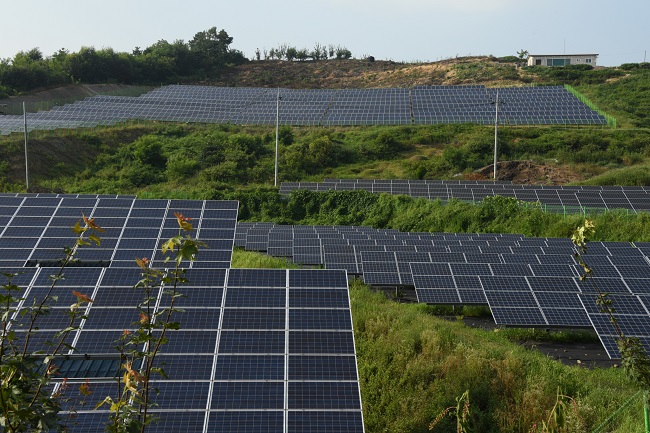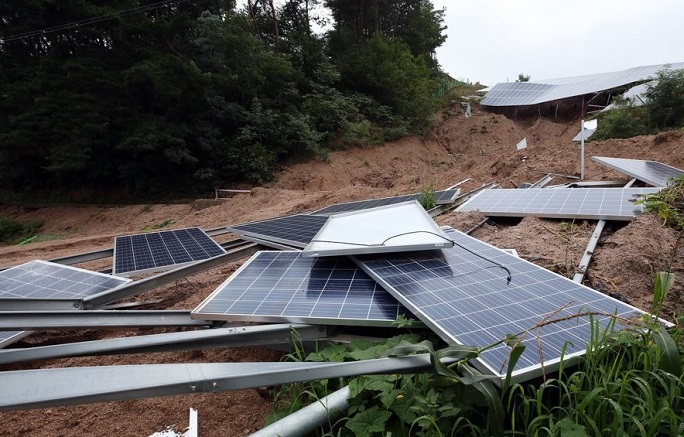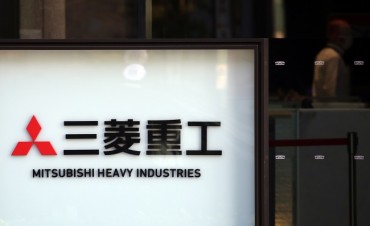
This photo, provided by Korea Forest Service on Aug. 7, 2020, shows solar panel facilities set up at a mountain.
SEOUL, Feb. 26 (Korea Bizwire) — Criticism is rising against the government’s push for renewable energy, with many claiming that government policies are directly responsible for the devastation of the natural environment across the country.
Critics specifically point at solar generation facilities and wind turbines built in mountainous areas, and solar panels set up on farms without any consideration for agricultural practices and culture as sources of the problem.
In fact, ever since the government embarked on a solar power project to replace nuclear energy, stretches of mountains and forests 15 times larger than Seoul’s Yeouido Island or 6,000 times larger than Seoul World Cup Stadium have been destroyed over the past three years.
As environmental damage caused by sun rays worsens, the current administration under President Moon Jae-in imposed stronger restrictions on solar panels in December 2018 not to exceed angles of 15 degrees.
Solar panels made exclusively for mountainous or forest regions, too, were allowed to be used only during certain periods, after which operators were required to restore nearby mountains and forests.
“Installing solar panel facilities in state-owned forest reserves involves logging and other forms of environmental damage,” said the Korea Forest Service disapprovingly.
As a result, cases of approval for solar panel facilities in mountainous regions dropped from 5,533 in 2018 to 2,129 in 2019. Land approved for solar facilities shrank from 2,443 hectares in 2018 to 1,024 hectares in 2019.
These reductions, however, came after too many mountains and forests had already been damaged, and all approvals made before the imposition of stricter measures in December 2018 continue to harm the environment.
Cutting down trees to set up wind power generators also poses an environmental risk.
While it is one thing to damage the environment, solar panels covering up extensive farmlands are also creating a serious problem, destroying long years of tradition and culture of farmers and their communities.

A solar facility set on a mountain slope collapsed in Jaecheon, North Gyeongsang Province on Aug. 8, 2020. (Yonhap)
Experts argue that solar panels in farmlands were built without consideration of the country’s geographic and environmental features.
South Korean terrain is mountainous in general, and many fields and farms are located on slopes. Farming on slopes is one thing, building metal facilities on slopes creates a whole different set of problems.
Using slopes to grow crops can prevent landslides and floods as roots hold onto the land. Building metal facilities only exacerbates the risk.
Climate change is already increasing the frequency of heavy rains, and such practices are bound to increase the risk of disaster.
According to a survey, farmers are struggling with a heavy sense of loss as solar panels are altering the landscape of their fields and farms.
Critics argue that farmlands are becoming scapegoats for the well-being of cities as they are devoured by solar panels.
What’s more, rooftops of public buildings or large structures, where solar panels can be installed, are almost never being utilized at the moment.
While the number of large warehouses is increasing due to spiking demand for online delivery, only few of them have solar panels installed on their roofs since cheap electricity for warehouses lowers the incentive to set up solar panels, with legal mechanisms and institutions for renewable energy lacking.
China is using the entire side of a large building for solar power generation.
More rooftops and walls are being fitted with solar generators, while Vietnam and Taiwan are introducing building integrated photovoltaic systems, integrating solar panels with the roofs and walls of buildings.
Sadly, the government’s boasts of Green New Deal initiative, a signature policy project of the president to foster environment-friendly industries, seems to be coming at a cost of dramatic environmental degradation.
A truly sustainable Green New Deal should be able to protect the environment while also preserving the beautiful landscape of South Korea’s nature.
H. M. Kang (hmkang@koreabizwire.com)






